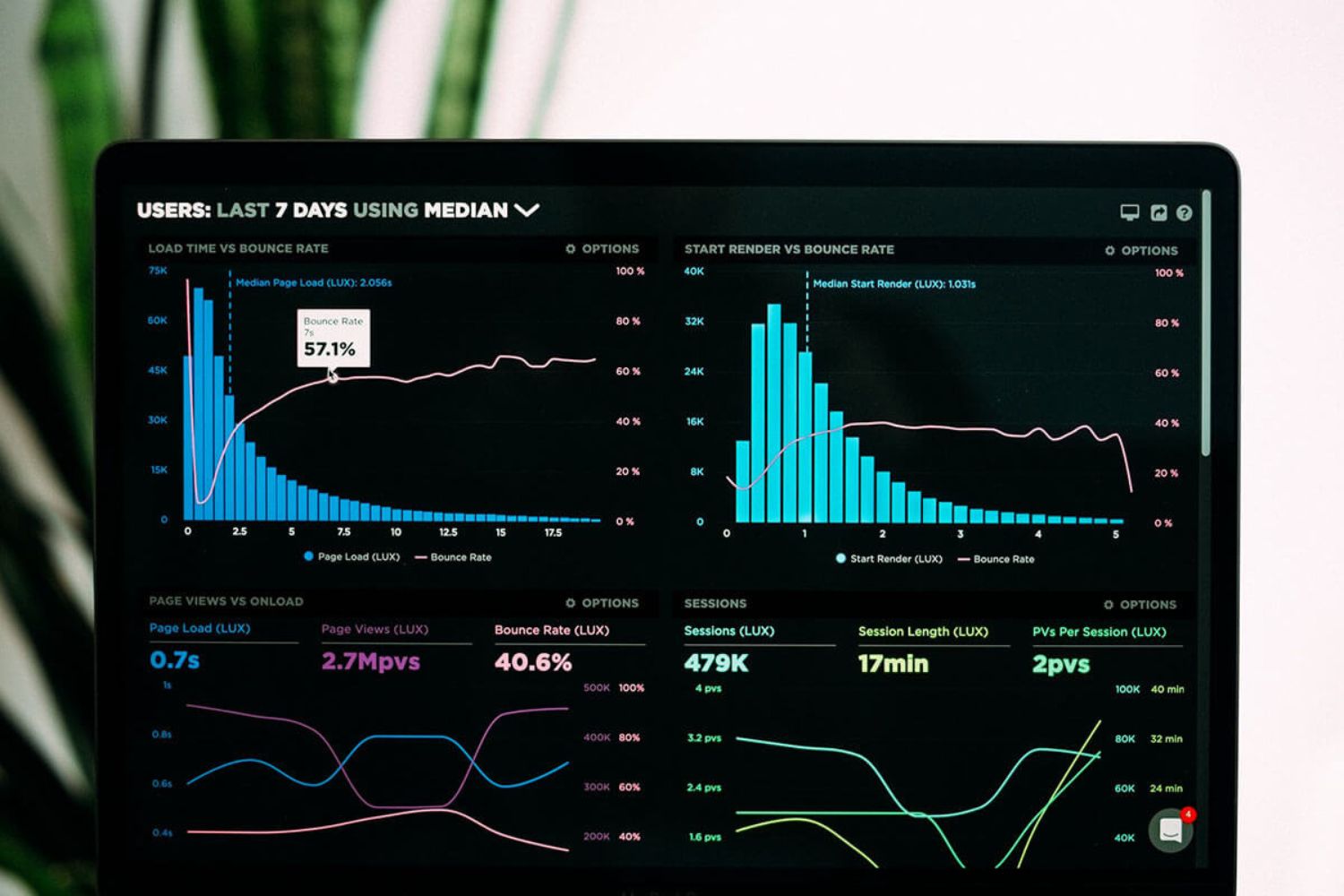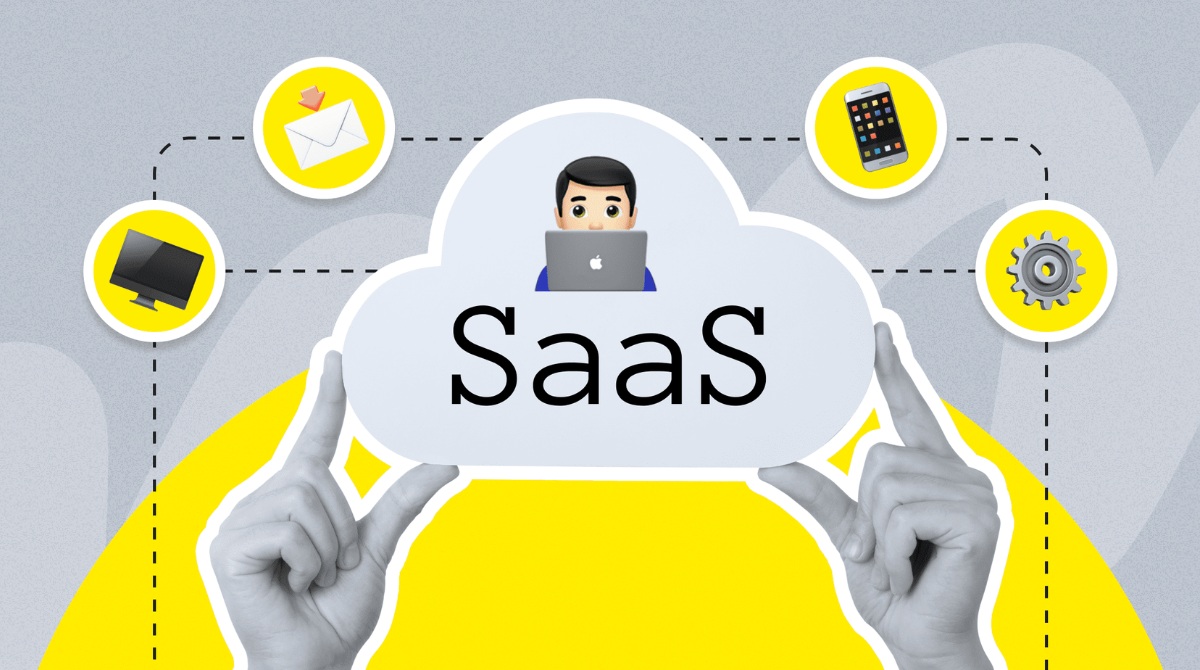Introduction
The world of software-as-a-Service (SaaS) has seen tremendous growth in recent years, transforming the way businesses operate and revolutionizing various industries. As the demand for SaaS products continues to soar, it is essential for companies in this space to develop a solid financial model to drive their success.
A SaaS financial model is a crucial tool that enables businesses to forecast their revenues, estimate expenses, analyze profitability, and plan for future growth. It provides a clear picture of the company’s financial health, helping stakeholders make informed decisions and attract potential investors.
Building an effective SaaS financial model involves understanding key metrics, defining revenue streams, estimating customer acquisition costs, projecting cash flows, determining pricing strategies, and forecasting expenses. It also requires sensitivity analysis and scenario planning to assess the impact of various factors on the business’s financial performance.
In this article, we will delve into the intricacies of building a comprehensive SaaS financial model. We will explore the key metrics that drive this model, discuss various revenue and expense forecasting techniques, and dive into the importance of scenario analysis. By the end of this article, you will have a solid foundation to create a robust SaaS financial model for your business.
Whether you are a SaaS startup looking to secure funding or an established company aiming to optimize your financial strategy, understanding and developing a strong financial model is crucial to your success. Building an accurate and realistic SaaS financial model will not only help you predict revenue and expenses but will also guide your decision-making process and drive your business forward.
So, let’s dive into the world of SaaS financial modeling and discover how to create a compelling and effective model to thrive in the dynamic landscape of the SaaS industry.
Understanding SaaS Financial Models
Before diving into the intricacies of building a SaaS financial model, it is important to understand what it entails and why it is crucial for the success of a SaaS business.
A SaaS financial model is a comprehensive analysis of a software-as-a-Service company’s revenue streams, cost structure, and projected financial performance. It serves as a roadmap for the business and provides valuable insights into its financial health.
One of the primary objectives of a SaaS financial model is to forecast revenue accurately. This involves understanding the different sources of revenue for the business, such as subscription fees, add-on services, or transaction fees, and estimating their growth potential. By analyzing market trends, customer behavior, and competition, businesses can develop a revenue model that aligns with their business goals.
Equally important is the estimation of customer acquisition costs (CAC) and customer lifetime value (CLTV). CAC refers to the amount of money spent on acquiring a new customer, including marketing and sales expenses. CLTV, on the other hand, represents the revenue generated over the entire customer relationship. These metrics help businesses assess the profitability of acquiring new customers and determine the optimal strategies for customer acquisition.
Another key aspect of a SaaS financial model is the cost structure. It involves identifying the various costs associated with operating a SaaS business, such as infrastructure costs, personnel costs, marketing expenses, and customer support. Understanding the cost structure allows businesses to estimate their expenses accurately and identify opportunities for optimizing costs.
Cash flow projections are also an integral part of a SaaS financial model. By analyzing incoming and outgoing cash flows, businesses can ensure they have sufficient funds to meet their financial obligations and invest in growth opportunities. This includes considering factors such as recurring revenue, cash burn rate, and capital investments.
Furthermore, a well-developed SaaS financial model incorporates pricing strategies and revenue projections. This involves determining the optimal pricing structure for the product or service, considering factors such as market demand, competition, and customer value. Revenue projections help businesses set realistic financial goals and align their strategies accordingly.
Sensitivity analysis and scenario planning are crucial components of a SaaS financial model. These techniques allow businesses to simulate different scenarios and assess the potential impact on their financial performance. By analyzing best-case, worst-case, and moderate-case scenarios, businesses can make informed decisions, mitigate risks, and plan for contingencies.
Overall, a comprehensive understanding of SaaS financial models is essential for any business operating in the SaaS industry. It enables businesses to make informed financial decisions, attract potential investors, and ensure sustainable growth. By accurately forecasting revenue, estimating costs, and analyzing various financial metrics, businesses can optimize their operations and drive long-term success.
Key Metrics for SaaS Financial Models
When building a SaaS financial model, there are several key metrics that play a vital role in assessing the financial health and success of a SaaS business. These metrics help businesses make informed decisions, optimize their operations, and drive growth. Let’s explore some of the key metrics that should be incorporated into a SaaS financial model.
1. Monthly Recurring Revenue (MRR): MRR is the core revenue metric for SaaS businesses. It represents the predictable and recurring revenue generated from subscription-based services. Tracking MRR allows businesses to measure growth, track the impact of pricing changes, and identify trends in customer churn and expansion.
2. Churn Rate: Churn rate refers to the percentage of customers who cancel their subscription or stop using the service within a given period. It is crucial to track churn rate as it directly impacts MRR and customer lifetime value. By reducing churn rate, businesses can improve customer retention and increase revenue.
3. Customer Lifetime Value (CLTV): CLTV is a measure of the total revenue a business can expect to generate from a customer over their entire lifetime. It takes into account factors such as average revenue per customer, customer churn rate, and recurring revenue. CLTV helps businesses understand the long-term value of acquiring and retaining customers.
4. Customer Acquisition Cost (CAC): CAC represents the cost associated with acquiring a new customer. It includes marketing expenses, sales commissions, and any other costs directly related to customer acquisition. By comparing CAC with CLTV, businesses can assess the profitability of their customer acquisition strategies and optimize their marketing and sales efforts.
5. Gross Margin: Gross margin is the difference between revenue and the direct costs of providing the service, such as hosting fees and support costs. It measures the profitability of the core services and helps businesses evaluate their pricing strategies and control their expenses.
6. Burn Rate: Burn rate is the rate at which a company is spending its cash reserves to cover operational expenses while generating limited or no revenue. It is essential for startups and early-stage SaaS businesses to monitor their burn rate closely to ensure they have enough funds to sustain operations until they achieve positive cash flow or secure additional funding.
7. Return on Investment (ROI): ROI measures the profitability of investments made by the business, such as marketing campaigns or product development initiatives. It helps businesses assess the effectiveness of their investments and make data-driven decisions to optimize their resource allocation.
By incorporating these key metrics into the SaaS financial model, businesses can gain valuable insights into their financial performance and make informed decisions to drive growth and profitability. These metrics not only help businesses track and analyze their current performance but also serve as indicators for future success and provide a solid foundation for financial planning and forecasting.
Building the Revenue Model
The revenue model is a critical component of a SaaS financial model, as it determines how a business generates revenue from its products or services. Building an effective revenue model requires a deep understanding of the target market, customer segments, pricing strategies, and growth opportunities. Let’s explore the key steps involved in building a revenue model in a SaaS financial model.
1. Identify Revenue Streams: The first step is to identify the different sources of revenue for the SaaS business. These can include subscription fees, add-on services, transaction fees, or advertising revenue. By understanding the various avenues for generating revenue, businesses can develop a diversified revenue model that aligns with their customer needs and market demand.
2. Define Pricing Strategy: Developing a pricing strategy plays a crucial role in the revenue model. It involves determining the right pricing structure for the product or service by considering factors such as market competition, customer value, and willingness to pay. The pricing strategy should strike a balance between maximizing revenue and attracting and retaining customers.
3. Analyze Market Trends: To build an accurate revenue model, it is essential to analyze market trends and dynamics. This can include studying competitors’ pricing strategies, understanding customer preferences, and identifying growth opportunities. By staying informed about the market landscape, businesses can make data-driven decisions and position themselves strategically to capture market share.
4. Forecast Revenue Growth: Revenue growth forecasting involves projecting future revenue based on historical performance, market trends, and growth assumptions. This requires analyzing factors such as customer acquisition, churn rate, expansion revenue, and upgrades. Accurate revenue growth projections enable businesses to set realistic financial goals and develop effective strategies to achieve them.
5. Consider Pricing Tiers and Packaging: Packaging different pricing tiers and options can be a successful strategy to cater to different customer needs and increase revenue. Offering multiple plans with varying features and price points allows businesses to target different customer segments and capture a wider customer base.
6. Monitor and Optimize the Revenue Model: Once implemented, it is crucial to continually monitor and optimize the revenue model. Businesses should track key metrics like Monthly Recurring Revenue (MRR), Average Revenue per User (ARPU), and customer churn rate to assess the effectiveness of the revenue model and identify areas for improvement. Based on the insights gained, businesses can make informed decisions to refine their pricing strategy and capture additional revenue opportunities.
Building an effective revenue model requires a deep understanding of the market, customer behavior, and pricing dynamics. By carefully considering these factors and regularly evaluating and refining the revenue model, businesses can drive sustainable revenue growth and profitability.
Estimating Customer Lifetime Value (CLTV)
Estimating Customer Lifetime Value (CLTV) is a crucial element in building a SaaS financial model. CLTV represents the total expected revenue a business can generate from a customer throughout their entire relationship with the company. By accurately estimating CLTV, businesses can make informed decisions about customer acquisition strategies, pricing models, and overall revenue projections. Let’s delve into the key factors involved in estimating CLTV.
1. Average Revenue per User (ARPU): The first step in estimating CLTV is calculating the average revenue generated from each customer over a specific period. This includes considering all revenue streams, such as subscription fees and additional services or upgrades. ARPU provides a baseline for understanding customer value and forms the foundation for CLTV estimation.
2. Customer Churn Rate: Churn rate refers to the percentage of customers who cancel their subscription or stop using the service within a given period. Understanding and predicting churn rate is vital for estimating CLTV. A higher churn rate leads to shorter customer lifecycles and lower CLTV. By implementing effective customer retention strategies, businesses can reduce churn and increase CLTV.
3. Estimating Customer Lifespan: Customer lifespan represents the duration that a customer remains engaged with the company’s products or services. This can vary depending on the industry, market, and customer behavior. By analyzing historical data and industry benchmarks, businesses can estimate the average lifespan of their customers, which serves as a critical component in calculating CLTV.
4. Gross Margin: Gross margin is the difference between revenue and the direct costs of providing the service. It is essential to consider gross margin when estimating CLTV, as it impacts the profitability of each customer. By factoring in gross margin, businesses can assess the overall profitability of acquiring and retaining customers.
5. Upselling and Cross-selling Opportunities: Identifying upselling and cross-selling opportunities is another crucial aspect of estimating CLTV. By analyzing customer behavior and preferences, businesses can determine additional products or features that can be offered to existing customers, driving incremental revenue and increasing CLTV.
6. Discount Rate: To account for the time value of money, it is necessary to apply a discount rate when estimating CLTV. This discount rate reflects the projected rate of return on the company’s investment and factors in the present value of future cash flows. By discounting future revenue, businesses can arrive at a more accurate estimation of CLTV.
Estimating CLTV is an ongoing process that requires continuous monitoring and adjustment. As businesses gather more data and gain insights into customer behavior, they can refine their CLTV estimates and make more accurate predictions. It is important to regularly reassess CLTV to adapt to changing market conditions, customer preferences, and industry trends.
By accurately estimating CLTV, businesses can make data-driven decisions regarding customer acquisition strategies, customer retention efforts, and overall revenue forecasts. Understanding the value each customer brings to the business over their lifetime helps drive profitability, inform marketing initiatives, and build strong customer relationships for long-term success.
Calculating Customer Acquisition Cost (CAC)
Calculating Customer Acquisition Cost (CAC) is essential for assessing the effectiveness and profitability of customer acquisition strategies in a SaaS financial model. CAC represents the cost incurred by a business to acquire a new customer. By accurately calculating CAC, businesses can make informed decisions about marketing budgets, optimize customer acquisition efforts, and measure the return on investment (ROI) of their marketing and sales activities. Let’s explore the key factors involved in calculating CAC.
1. Marketing and Sales Expenses: The first step in calculating CAC is to identify and quantify all the expenses directly related to marketing and sales activities. This can include costs for paid advertising, social media campaigns, content creation, marketing software, and sales team salaries. It is important to allocate and attribute these expenses accurately to customer acquisition efforts.
2. Time Period: Next, businesses should determine the time period over which CAC is calculated. The time period can be monthly, quarterly, or annually, depending on the business’s needs and objectives. By analyzing expenses within a specific time frame, businesses can gain insights into the efficiency of their customer acquisition efforts over that period.
3. Number of New Customers: To calculate CAC, businesses need to determine the number of new customers acquired during the specified time period. This can be obtained by tracking customer sign-ups, conversion rates, or product activations. The number of new customers serves as the denominator in the CAC formula.
4. Calculate CAC: The formula to calculate CAC is simple and straightforward. Divide the total marketing and sales expenses incurred during the specified time period by the number of new customers acquired. The result will provide the average cost of acquiring each new customer during that period.
5. CAC Payback Period: Understanding the CAC payback period is crucial for assessing the sustainability and financial impact of customer acquisition. The CAC payback period represents the time it takes for a business to recoup the investment made to acquire a new customer. By analyzing the CAC payback period, businesses can assess the efficiency of their customer acquisition efforts and make informed decisions about resource allocation and scaling strategies.
6. Track CAC by Marketing Channels: To gain deeper insights into the performance of different marketing channels, it is important to track CAC by channel. By analyzing the CAC associated with each marketing channel or campaign, businesses can identify channels that drive the most cost-effective customer acquisition. This allows for more informed decision-making regarding marketing budget allocation and optimization strategies.
7. Monitor and Optimize CAC: Once CAC is calculated, it is crucial to monitor and optimize this metric over time. Regularly reviewing CAC helps businesses identify trends, changes in customer acquisition costs, and the impact of optimization efforts. By analyzing CAC trends, businesses can make data-driven decisions to improve efficiency, optimize marketing spend, and drive profitability.
Calculating CAC is a fundamental step in assessing the financial viability of customer acquisition strategies. By accurately measuring CAC, businesses can optimize their marketing and sales activities, allocate resources effectively, and achieve sustainable growth. Regular monitoring and optimization of CAC contribute to improved ROI and long-term success in the competitive SaaS market.
Financing and Cash Flow Projections
Financing and cash flow projections are critical components of a SaaS financial model as they provide insights into the company’s financial health and the availability of funds to support operations and growth. Understanding and accurately projecting cash flow allows businesses to plan for future expenses, manage working capital, and make informed decisions about financing and investment opportunities. Let’s explore the key considerations when it comes to financing and cash flow projections in a SaaS financial model.
1. Funding Sources: Businesses should identify and assess the various sources of funding available to them. This can include equity financing, debt financing, or government grants. Understanding the pros and cons of each funding source will help businesses determine the most suitable option to support their growth and expansion plans.
2. Capital Expenditures: Capital expenditures, such as investments in technology infrastructure or equipment, should be factored into cash flow projections. By anticipating and planning for these expenses, businesses can ensure they have sufficient funds to meet their long-term operational needs and drive growth.
3. Working Capital Management: Estimating and maintaining an adequate level of working capital is crucial for the smooth functioning of a SaaS business. Effective working capital management involves optimizing accounts receivable, accounts payable, and inventory levels to ensure a healthy cash flow position. By closely monitoring working capital, businesses can address any potential cash flow gaps and maintain financial stability.
4. Projected Cash Flow: Cash flow projections involve estimating the inflows and outflows of cash over a specific period. This includes forecasting recurring revenue, customer churn, operating expenses, and investments. By accurately projecting cash flow, businesses can identify periods of positive or negative cash flow, plan for financing needs, and make informed decisions about resource allocation.
5. Sensitivity Analysis: Sensitivity analysis involves assessing the impact of potential changes in cash flow drivers, such as pricing, customer acquisition costs, or market conditions. By conducting sensitivity analysis, businesses can evaluate and prepare for different scenarios, identify potential risks, and make informed decisions about cash flow management and financial strategy.
6. Financing Options: Based on projected cash flow and financial needs, businesses can determine the appropriate financing options. This can include raising additional equity or debt financing, negotiating credit terms with suppliers, or exploring alternative funding sources. Selecting the right financing options helps businesses optimize their capital structure and ensure the availability of funds to support growth and development.
7. Ongoing Monitoring and Adjustment: Cash flow projections should be regularly monitored and adjusted based on actual performance. By comparing projected cash flow with actual cash flow, businesses can assess their accuracy and make necessary adjustments to the financial model. Ongoing monitoring allows businesses to identify any variances and take proactive measures to address cash flow concerns.
Financing and cash flow projections are vital elements of a SaaS financial model. By accurately projecting cash flow, businesses can make informed decisions about financing, manage working capital effectively, and ensure the availability of funds to support growth and operations. Regular monitoring and timely adjustments contribute to financial stability and enable businesses to navigate the ever-changing landscape of the SaaS industry.
Pricing Strategies and Revenue Projections
Pricing strategies and revenue projections are critical components of a SaaS financial model as they determine how a business monetizes its product or service and forecasts its revenue streams. Developing effective pricing strategies and accurate revenue projections is essential for optimizing profitability, attracting customers, and driving business growth. Let’s explore the key considerations when it comes to pricing strategies and revenue projections in a SaaS financial model.
1. Market Analysis: Understanding the market landscape and competitive dynamics is crucial when developing pricing strategies. Conduct a thorough analysis of competitors, target audience, and market trends to determine how your pricing strategy can align with market expectations and maximize revenue potential.
2. Value-Based Pricing: Consider adopting a value-based pricing approach, where pricing is determined by the perceived value that customers derive from your product or service. This strategy allows you to capture a fair share of the value you provide, rather than solely relying on cost-based pricing models. By accurately assessing the unique value proposition of your offering, you can set prices that resonate with customers and reflect the benefits they receive.
3. Pricing Tiers and Packaging: Consider offering different pricing tiers and packaging options to cater to various customer segments and their individual needs. This strategy provides flexibility and a custom-fit solution, allowing customers to choose the most relevant features and pricing level. Offering bundled packages can also encourage customers to upgrade and increase their overall spend, thus boosting revenue.
4. Discount and Promotional Strategies: Utilize discount and promotional strategies strategically to attract new customers, drive customer loyalty, and increase revenue. This can include offering limited-time discounts, referral programs, or bulk pricing discounts. However, it’s important to carefully analyze the impact of discounts on profitability and ensure they align with your revenue goals.
5. Upselling and Cross-selling Opportunities: Identify opportunities for upselling and cross-selling to existing customers. By offering additional features, services, or higher pricing tiers, you can increase revenue per customer and maximize the lifetime value of each customer. Identify the right moments in the customer journey to present upselling or cross-selling opportunities to drive incremental revenue growth.
6. Revenue Projections: Accurate revenue projections are essential for guiding financial planning and business decisions. Consider historical performance, market trends, and growth assumptions when projecting revenue. Analyzing customer acquisition rates, churn rates, and expansion revenue can provide insights into the expected growth trajectory and help set realistic revenue goals.
7. Monitor and Optimize: Continuously monitor and analyze pricing strategies and revenue performance. Regularly review pricing metrics, customer feedback, and revenue growth to identify opportunities for optimization. This can include adjusting pricing tiers, refining promotional strategies, or exploring new revenue streams to maximize revenue potential.
Pricing strategies and revenue projections play a significant role in the success of a SaaS business. By adopting effective pricing strategies, businesses can monetize their product or service, attract customers, and drive revenue growth. Accurate revenue projections provide insights into future financial performance, guide strategic planning, and ensure that businesses are well-positioned to achieve their revenue goals.
Cost Structure and Expense Forecasting
An essential aspect of building a comprehensive SaaS financial model is understanding the cost structure and accurately forecasting expenses. Cost structure refers to the various costs incurred by a SaaS business to operate and deliver its products or services. Expense forecasting helps businesses plan and allocate resources effectively, assess profitability, and make informed financial decisions. Let’s explore the key considerations when it comes to cost structure and expense forecasting in a SaaS financial model.
1. Fixed Costs: Fixed costs are expenses that do not change with the level of production or the number of customers. These can include rent, salaries, utilities, and software licenses. Identifying fixed costs and accurately forecasting them is crucial for understanding the baseline operating expenses of the business.
2. Variable Costs: Variable costs are directly tied to the level of production or the number of customers. Examples of variable costs in a SaaS business might include hosting costs, transaction fees, and customer support expenses. Forecasting these costs requires an understanding of the factors that impact their variability, such as user growth or increased usage volume.
3. Cost of Goods Sold (COGS): COGS represents the direct costs associated with delivering the product or service. In a SaaS business, COGS could include costs related to infrastructure, maintenance, or software development. Accurately estimating COGS is essential for calculating the gross margin and understanding the profitability of the core services.
4. Research and Development (R&D) Expenses: R&D expenses encompass costs incurred for product development, innovation, and enhancements. These expenses are crucial for staying competitive and meeting customer demands. Forecasting R&D expenses requires considering the scope of development work, hiring additional talent, and any technological advancements that may impact development efforts.
5. Marketing and Sales Expenses: Marketing and sales expenses include costs associated with promoting the product or service, acquiring customers, and managing customer relationships. This can include advertising, marketing campaigns, sales commissions, and customer relationship management (CRM) tools. Accurately forecasting these expenses is crucial for determining the customer acquisition cost (CAC) and optimizing marketing and sales strategies.
6. General and Administrative (G&A) Expenses: G&A expenses cover the general operating costs of the business that are not attributed to specific departments or functions. These can include legal fees, accounting expenses, office supplies, and employee benefits. Accurately projecting G&A expenses helps businesses plan for overhead costs and ensure the smooth functioning of day-to-day operations.
7. Expense Forecasting: Forecasting expenses involves projecting future costs based on historical data, market trends, and growth assumptions. It requires analyzing factors such as user growth, customer retention rates, pricing changes, and industry benchmarks. By accurately projecting expenses, businesses can budget effectively and make informed decisions about resource allocation and cost control.
Regularly reviewing and adjusting expense forecasts is vital for maintaining financial stability and optimizing cost efficiency. By closely monitoring expenses, businesses can identify cost-saving opportunities, assess the impact of operational decisions, and ensure profitability. Expense forecasting strengthens the overall financial planning and decision-making process, allowing businesses to allocate resources strategically and drive long-term success.
Sensitivity Analysis and Scenario Planning
Sensitivity analysis and scenario planning are essential tools in a SaaS financial model that help businesses assess the potential impact of different variables and uncertainties on their financial performance. By conducting sensitivity analysis and scenario planning, businesses can identify potential risks, optimize strategies, and make informed decisions. Let’s explore the key considerations when it comes to sensitivity analysis and scenario planning in a SaaS financial model.
1. Sensitivity Analysis: Sensitivity analysis involves quantifying the impact of changes in key variables on the financial outcomes of the business. This analysis helps identify the variables that have the most significant influence on the financial model and allows businesses to prioritize their risk management efforts. By assessing the sensitivity of key metrics such as revenue, expenses, or customer acquisition costs to changes in variables like pricing, market demand, or churn rate, businesses gain valuable insights into the potential risks and opportunities.
2. Best-Case, Worst-Case, and Moderate-Case Scenarios: Scenario planning involves creating different scenarios to evaluate the potential financial outcomes under various circumstances. Best-case scenarios consider optimistic conditions, while worst-case scenarios explore pessimistic conditions. Moderate-case scenarios represent the most likely or baseline scenario. By assessing potential outcomes across these different scenarios, businesses can gain a more comprehensive understanding of the potential range of financial performance and make informed decisions based on risk tolerance and business objectives.
3. Factors to Consider: When conducting sensitivity analysis and scenario planning, it’s important to consider various factors that can impact the financial model. This includes changes in market demand, competitive landscape, pricing dynamics, customer behavior, regulatory changes, or technological advancements. By considering these factors, businesses can assess the volatility and potential risks associated with their financial projections and develop appropriate contingency plans.
4. Assessing Risk and Opportunity: Sensitivity analysis and scenario planning allow businesses to identify potential risks and opportunities. They enable businesses to proactively prepare for adverse situations or seize opportunities by developing strategic responses. By quantifying the impact of different scenarios, businesses can allocate resources effectively, adjust pricing strategies, optimize marketing efforts, or diversify revenue streams to mitigate risks and capture potential growth.
5. Continuous Monitoring and Adaptation: Sensitivity analysis and scenario planning should be dynamic processes that continue throughout the life cycle of the financial model. Market dynamics, customer preferences, or other external factors may change over time, requiring updated assessments of risks and opportunities. By continually monitoring and adapting the financial model based on new information and changing circumstances, businesses can stay agile, make informed decisions, and navigate the ever-evolving landscape of the SaaS industry.
By incorporating sensitivity analysis and scenario planning into a SaaS financial model, businesses can assess potential risks and opportunities, optimize strategies, and make informed decisions. These techniques provide a better understanding of the potential impacts of various variables on the financial performance of the business. Sensitivity analysis and scenario planning contribute to more robust financial planning, better risk management, and increased resilience, enabling businesses to thrive in an ever-changing environment.
Conclusion
Building a comprehensive SaaS financial model is crucial for the success of a SaaS business. It provides valuable insights into revenues, expenses, profitability, and cash flow, enabling businesses to make informed decisions, attract investors, and plan for sustainable growth. Throughout this article, we have explored the key elements involved in constructing a strong SaaS financial model.
Understanding the fundamentals of SaaS financial models, such as key metrics, revenue modeling, customer lifetime value (CLTV), and customer acquisition cost (CAC), lays the groundwork for accurate forecasting and financial planning. Incorporating effective pricing strategies, expense forecasting, sensitivity analysis, scenario planning, and cash flow projections further strengthens the financial model and helps businesses navigate uncertainties and risks.
It’s important to remember that a SaaS financial model is not a static document but rather a dynamic tool that requires continuous monitoring, adjustment, and adaptation. Regularly reviewing and refining the financial model based on actual performance, market trends, and changing circumstances enables businesses to make timely and informed decisions, optimize strategies, and maximize profitability.
In conclusion, a well-developed SaaS financial model provides businesses with a roadmap to success. It enables them to forecast revenues, estimate expenses accurately, assess profitability, and plan for future growth. By incorporating key metrics, pricing strategies, expense forecasting, and sensitivity analysis, businesses can make informed decisions and optimize their financial performance.
Ultimately, a comprehensive SaaS financial model empowers businesses to navigate the competitive landscape of the SaaS industry. By having a clear understanding of their financial health, opportunities, and risks, businesses can strategize, adapt, and thrive in a rapidly evolving market.
So, take the time to build a robust SaaS financial model that aligns with your business goals and objectives. It will serve as a valuable tool to drive your success, attract investors, and pave the way for sustainable growth in the dynamic and lucrative world of SaaS.

























